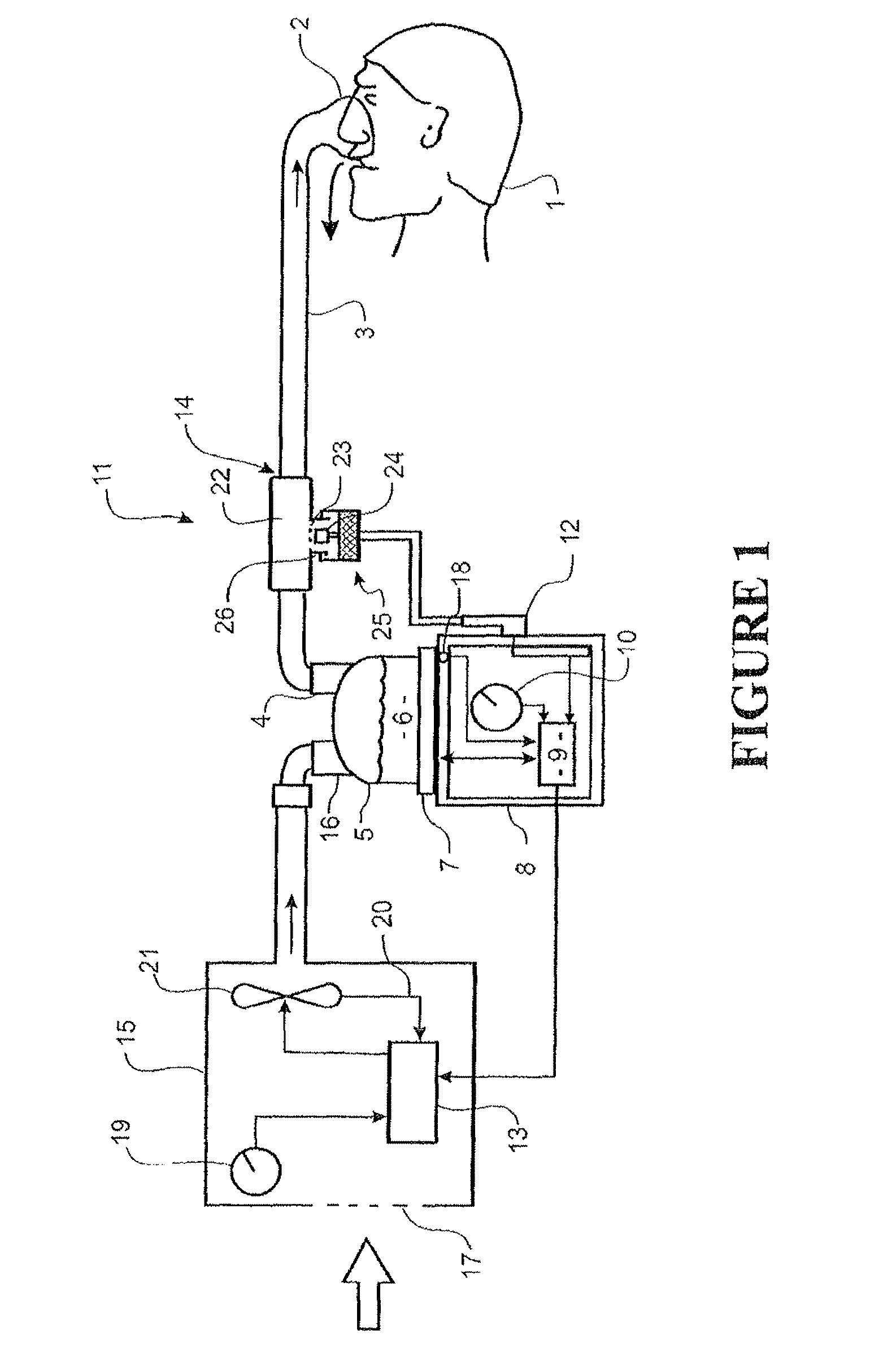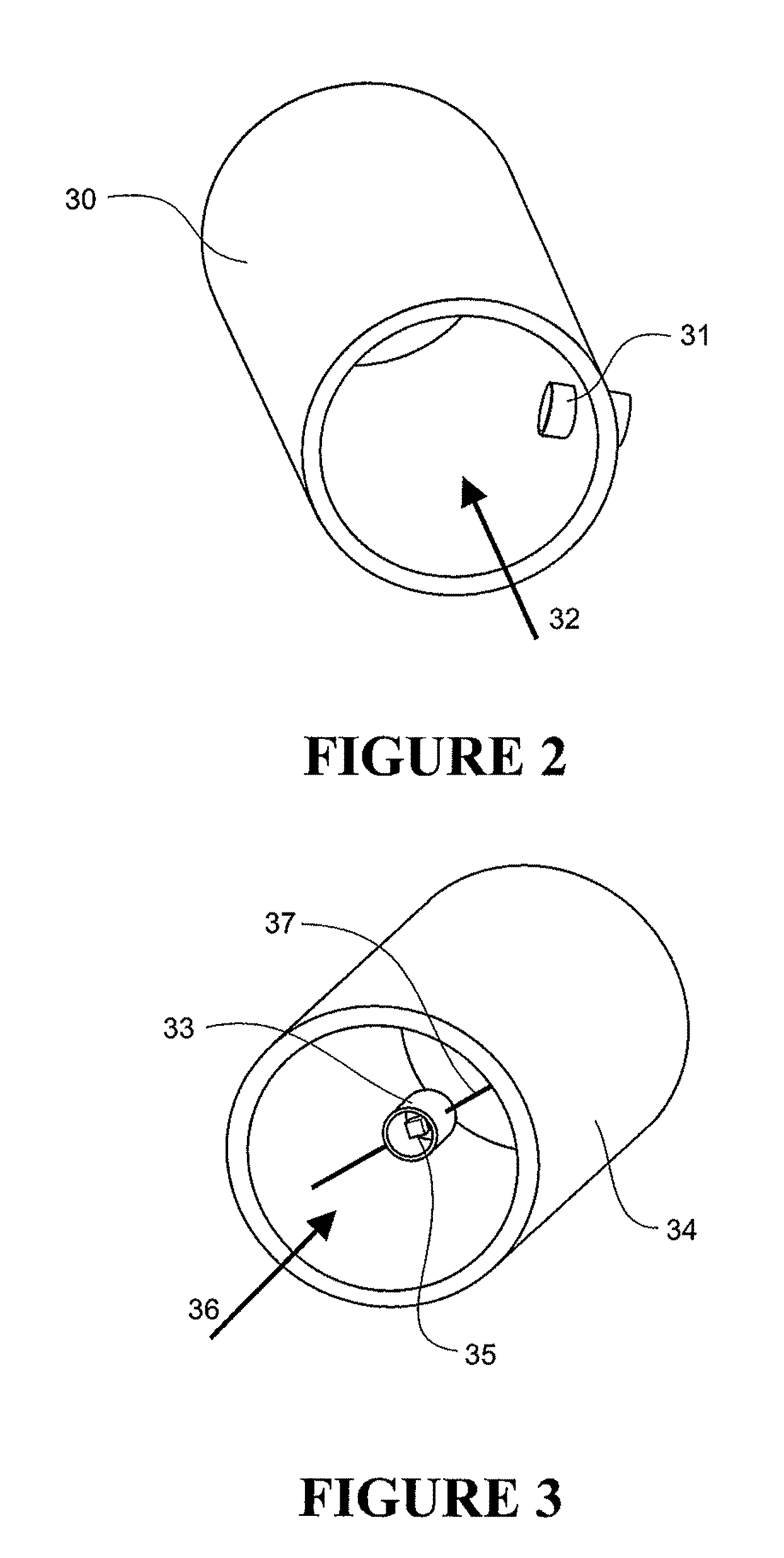System for sensing the delivery of gases to a patient
a technology for sensing systems and patients, applied in the direction of valve operating means/release devices, combustion types, lighting and heating apparatus, etc., can solve the problems of adverse effects of cpap treatment, difficulty in using cpap, and significant side effects for the majority of patients
- Summary
- Abstract
- Description
- Claims
- Application Information
AI Technical Summary
Benefits of technology
Problems solved by technology
Method used
Image
Examples
Embodiment Construction
[0039]The present invention provides a system for the delivery of gases to a patient and more particularly to a sensing means capable of sensing temperature or humidity downstream of a humidifier chamber, that is, on the wet-side of the system. The sensing means or part of the sensing means, for example, the sensor housing or cartridge, is capable of being removed and cleaned, for example in any autoclave, or alternatively disposed of and replaced. So, cross-contamination between patients on second or subsequent use of the sensing means or sensor is not possible. The sensing means of the present invention allows for the protection of a sensor from wet-side contaminants by means of a filter material. Therefore, wet-side contaminants are prevented from affecting the sensor's performance.
[0040]Also, the sensing means allows for accurate sensing after the humidifier, thus creating effective inputs for feedback control of the humidifier and more specifically the heating and humidificatio...
PUM
 Login to View More
Login to View More Abstract
Description
Claims
Application Information
 Login to View More
Login to View More - R&D
- Intellectual Property
- Life Sciences
- Materials
- Tech Scout
- Unparalleled Data Quality
- Higher Quality Content
- 60% Fewer Hallucinations
Browse by: Latest US Patents, China's latest patents, Technical Efficacy Thesaurus, Application Domain, Technology Topic, Popular Technical Reports.
© 2025 PatSnap. All rights reserved.Legal|Privacy policy|Modern Slavery Act Transparency Statement|Sitemap|About US| Contact US: help@patsnap.com



